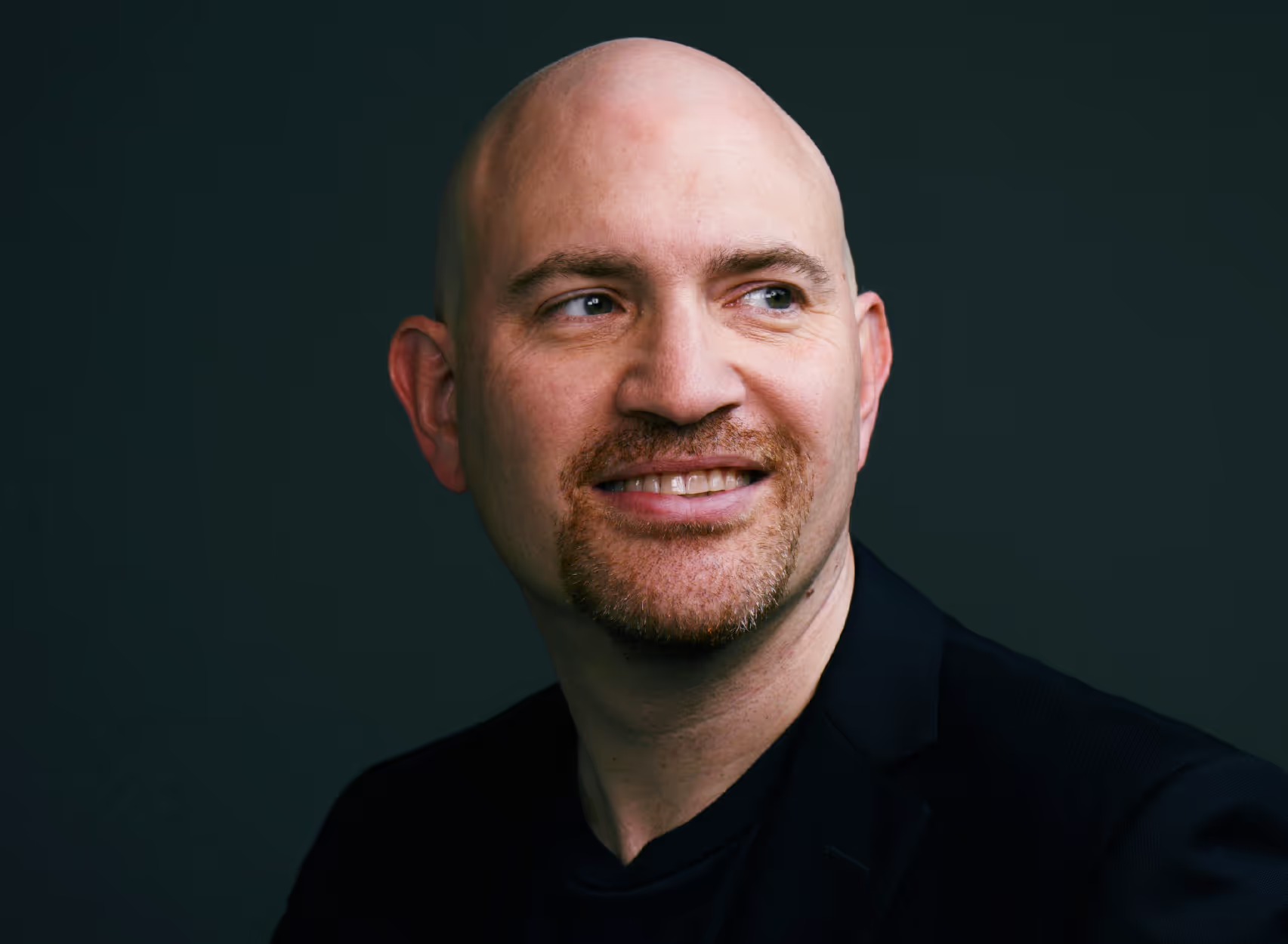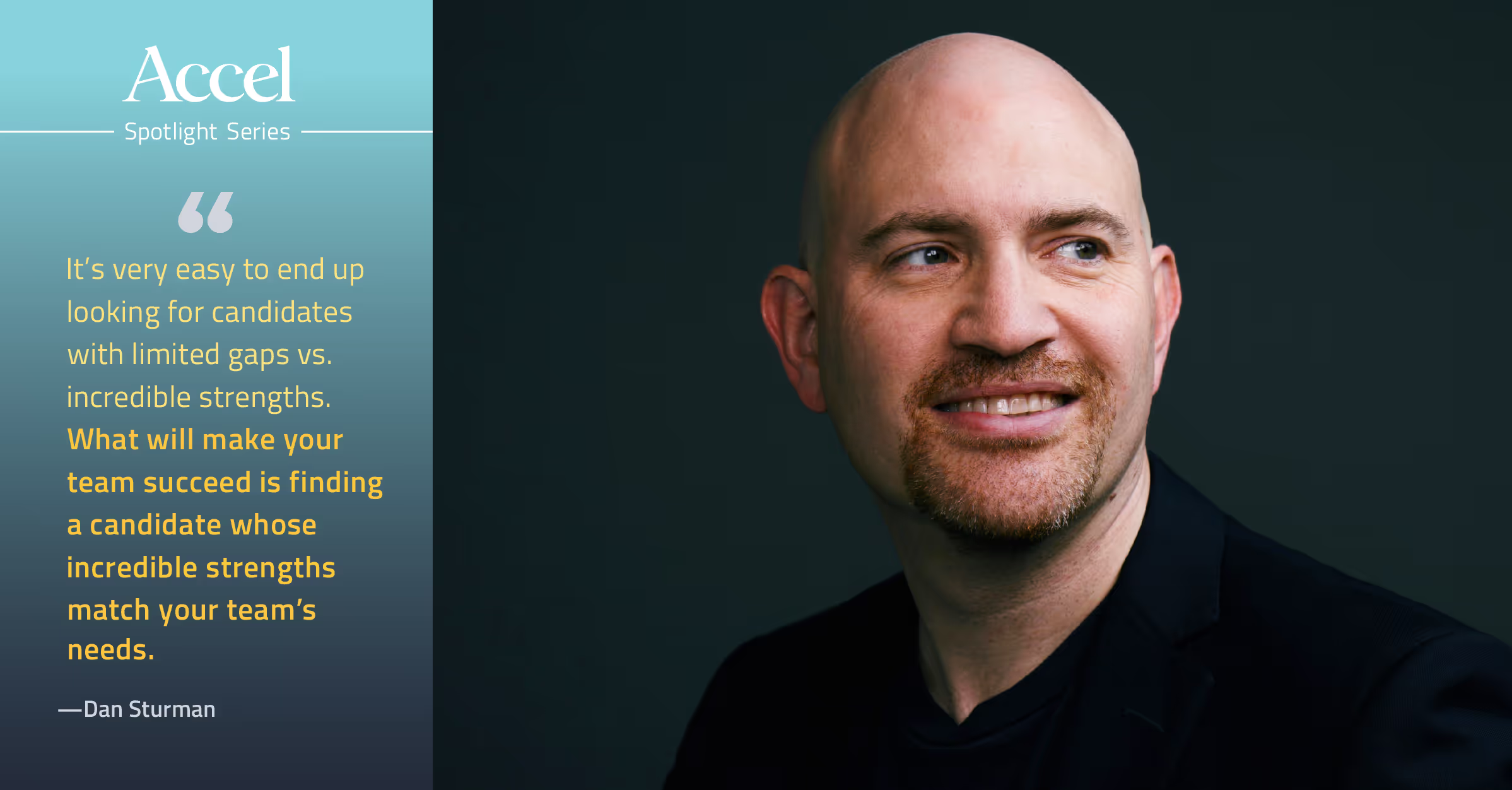Spotlight On: Building Great Teams

This is the first post in our “Spotlight On” series where Accel Talent Partner, interviews different business leaders on what constitutes a great team—as well as tips on how to build, grow and effectively manage one. At Accel, we have the good fortune of working with world class entrepreneurs and operators everyday and in this series, we sit down with some of the great executives in our portfolio and network, to discuss the topics of people and leadership and share their insights and lessons learned.
We couldn’t kick off the series with a more experienced and thoughtful leader—Dan Sturman. Dan was most recently SVP of Engineering at Cloudera (CLDR) where in addition to playing an integral role in building and supporting a number of sophisticated and complex engineering projects, he spent a significant amount of his time developing the management team both by growing from within and hiring for key talent. Prior to Cloudera, Dan spent more than 8 years in engineering leadership at Google, ultimately being promoted to VP.

As you’ll see in the interview below, Dan is passionate about building great engineering teams, and mentoring and growing people. We know we’re only scratching the surface of Dan’s experience, but hopefully we’re able to distill it down to a few concise yet powerful insights.
Peter: Dan, if there was one thing you’d advise CEOs and founders focused on when embarking on a search for an engineering leader, what would it be?
Dan: I think it is incredibly important to know what traits and abilities you are really looking for in a leader. I call these the primary traits for a role. Possibly even more important is to know what traits and abilities you can live without, or what I refer to as the secondary traits for a role. While this sounds straightforward I’m constantly amazed how often leaders haven’t thought through and distinguished the primary and secondary traits before embarking on a search.
When you are looking for a new leader, you generally know what pain points you’re trying to solve and that can help drive defining the primary traits. For example:
- It could be you don’t have the structure to the team you need and you want an engineering leader who can build out the people and processes for a scalable team.
- You may feel the technical implications of decisions aren’t being represented in key company decisions and you want a strong technical leader that brings this expertise to the executive team;
- You may have a technical debt or quality problem that is crippling your teams productivity or the experience of your users.
But each of the above scenarios also points to a set of attributes that don’t have to be strengths in the proposed leader—the secondary traits. For example, while you may need a leader to bring structure and process to a team, they may not need to have strong domain experience in your problem domain; an organization that needs a strong technical leader may not also need that leader to be a strong public speaker; a leader digging into technical debt may inherit well-structured teams, allowing them to grow over time in terms of team and personnel development.
Focus on Your Weaknesses—Not Your Candidate’s
There are two primary reasons I find it so important to clearly identify your secondary traits. The first is to ensure a very focused interview, and very focused criteria for the candidate. It’s very easy to end up looking for candidates with limited gaps versus incredible strengths. What will make your team succeed is finding a candidate whose incredible strengths match your team’s needs. The second benefit is you can be pragmatic in an incredibly competitive hiring market. Even if the person-without-faults exists (and I’m skeptical... I’ve certainly never met this person), it will significantly lengthen your search time and be much harder to close such a person when you do find them. Knowing which capabilities aren’t as important or would be coachable by you allow you to focus on those important traits and also have a doable search in this very competitive hiring market.
Beware the Brand Trap
Related to the above, another common pitfall I see in the search process is what I call “falling into the brand trap”. The brand trap is one where leaders are overly selective at resume review time, often keying off the specific companies or titles someone has held in the past (their brand). Company culture and role are important factors in narrowing that search to those critical traits, but by themselves they’re only one data point. What a candidate actually has accomplished and how they did it, in my experience, are much better indicators of strengths and gaps than the company and title.
The brand trap is particularly insidious if you’re looking to build a more diverse leadership team. Given our challenges as an industry as a whole on diversity, often the best branding skews away from underrepresented groups. Meanwhile there are outstanding leaders with underutilized potential in companies that may not be the most obvious sources of talent. Those leaders may have exactly the primary strengths you’re looking for but were overlooked or weeded out at the resume-review stage of the hiring pipeline. Some of the leaders I’ve been most proud of bringing onto my team have been very deliberately excluded by others based solely on the company or titles they’ve held previously – their abilities and talents were never actually looked at. Their loss; very much my gain! So focus on those primary traits, and be tolerant of those who need to grow into the secondary traits, avoid the brand trap and other approaches that have you discard potential candidates too quickly, and you’ll find you are well set up for a successful interviewing process.
Next up in this 3-part series, how to create an effective candidate search
Great companies aren't built alone.
Subscribe for tools, learnings, and updates from the Accel community.

.avif)